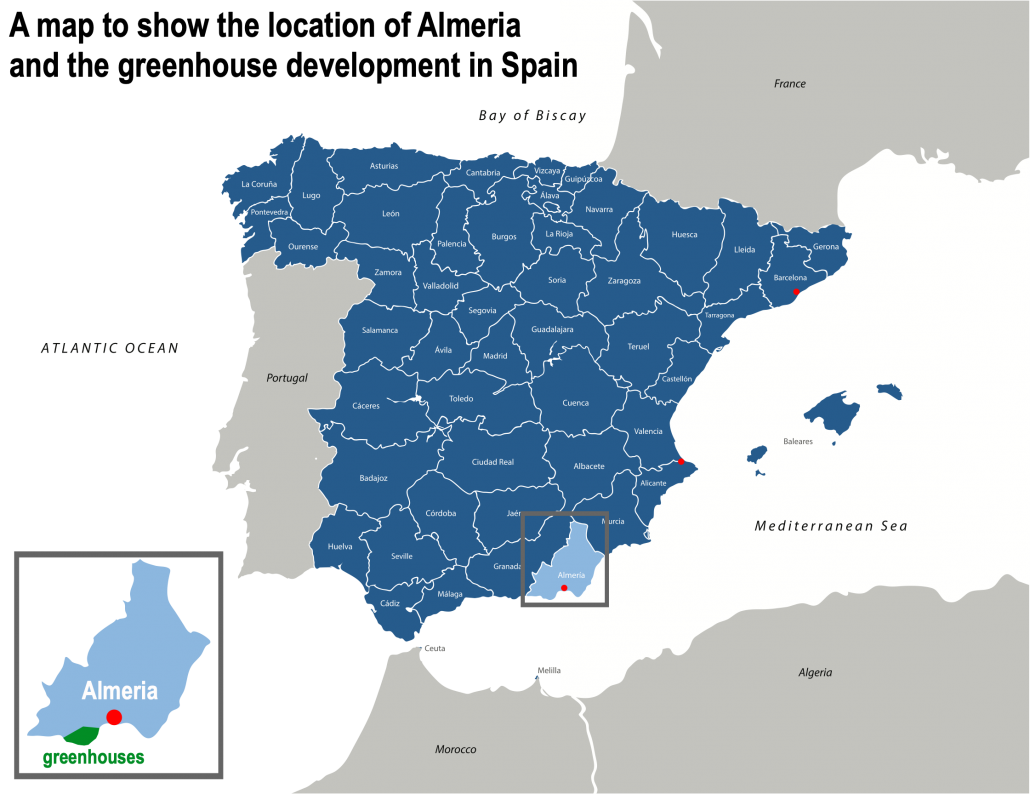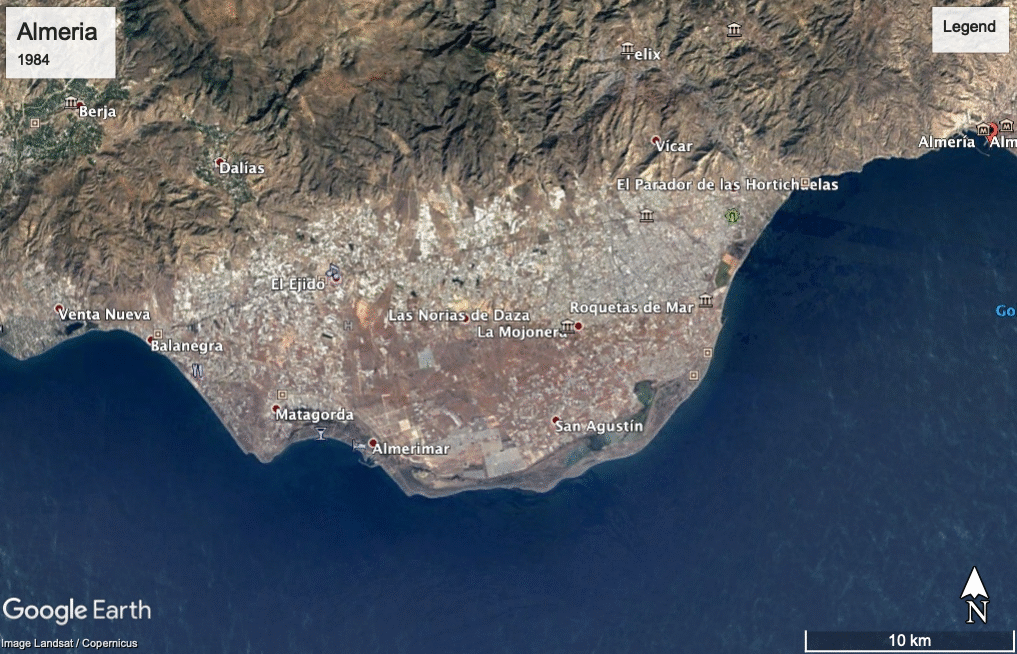Almería, Spain: a large-scale agricultural development
The southeast of Spain near Almería has a landscape similar to deserts in the USA. It has always been an arid area, receiving only 200mm of rainfall on average each year.

A map to show the location of Almeria and the greenhouse development in Spain
Over the last 35 years, the area has developed the largest concentration of greenhouses in the world. Covering 26,000 hectares the greenhouses are owned and operated by a combination of large businesses and individual farmers.

Almeria 1984-2016
When you buy out of season food, such as tomatoes, lettuce, cucumbers and lettuce, chances are they were grown in and around Almería. The scheme delivers over half of Europe’s fruit and vegetables. As a result of this, the development brings over US$1.5 billion a year in income to the area.
This development has occurred for several reasons. These include:
- changes in diet as people eat more fruit and vegetables
- improved transport infrastructure and new, fast transport methods, which have reduced transport costs
- the development of plastic used to build the greenhouses
- the area receives around 3,000 hours of sun per year and, with an average temperature of 20 °C crops can be grown in the winter without the need for additional heating, therefore reducing costs
- immigrants provide cheap labour
- the region has received additional funding from the Spanish Government and the EU
The success of the greenhouses has led to them covering the plain of Dalías, extending up the valleys of the Alpujarra hills, one of Spain’s unspoilt areas. Hydroponics is used to grow almost all plants. Zoom in to the map below to explore the area.
What have been the advantages and disadvantages of the large-scale agricultural development at Almería, Spain?
Advantages of the large-scale agricultural development at Almería
- the development has led to significant advances in hydroponic growing techniques
- the use of drip irrigation and hydroponics has led to less water being used
- the warm temperatures throughout the year mean low energy costs
- packing plants provide additional jobs
- there is a regular supply of cheap, temporary migrants from North Africa, Eastern Europe and South America
- factories providing materials for the greenhouses provide jobs
- fruit and vegetables are provided throughout the year
- there has been a reduction in the levels of chemicals used as the result of strict UK regulations on quality
- the multiplier effect – new scientific agribusiness companies have moved to the area providing high-skilled research and development jobs
Disadvantages of the large-scale agricultural development at Almería
- Conflict occurs between immigrants from different countries
- Some immigrants work illegally, so have no control over their working conditions
- Immigrants often receive low pay and live in poor conditions
- Ecosystems have been destroyed as large areas have been covered in plastic
- Plastic is dumped at sea, which harms marine ecosystems
- As pesticide use has increased, so have the health risks associated with its use
- Aquifers, natural underground stores of water, are drying up due to water being extracted for use in agriculture
- Despite average temperatures rising in Spain, in Almería, they have dropped by 0.3 °C per ten years, as greenhouses reflect sunlight into the atmosphere.
Related Topics
Use the images below to explore related GeoTopics.



